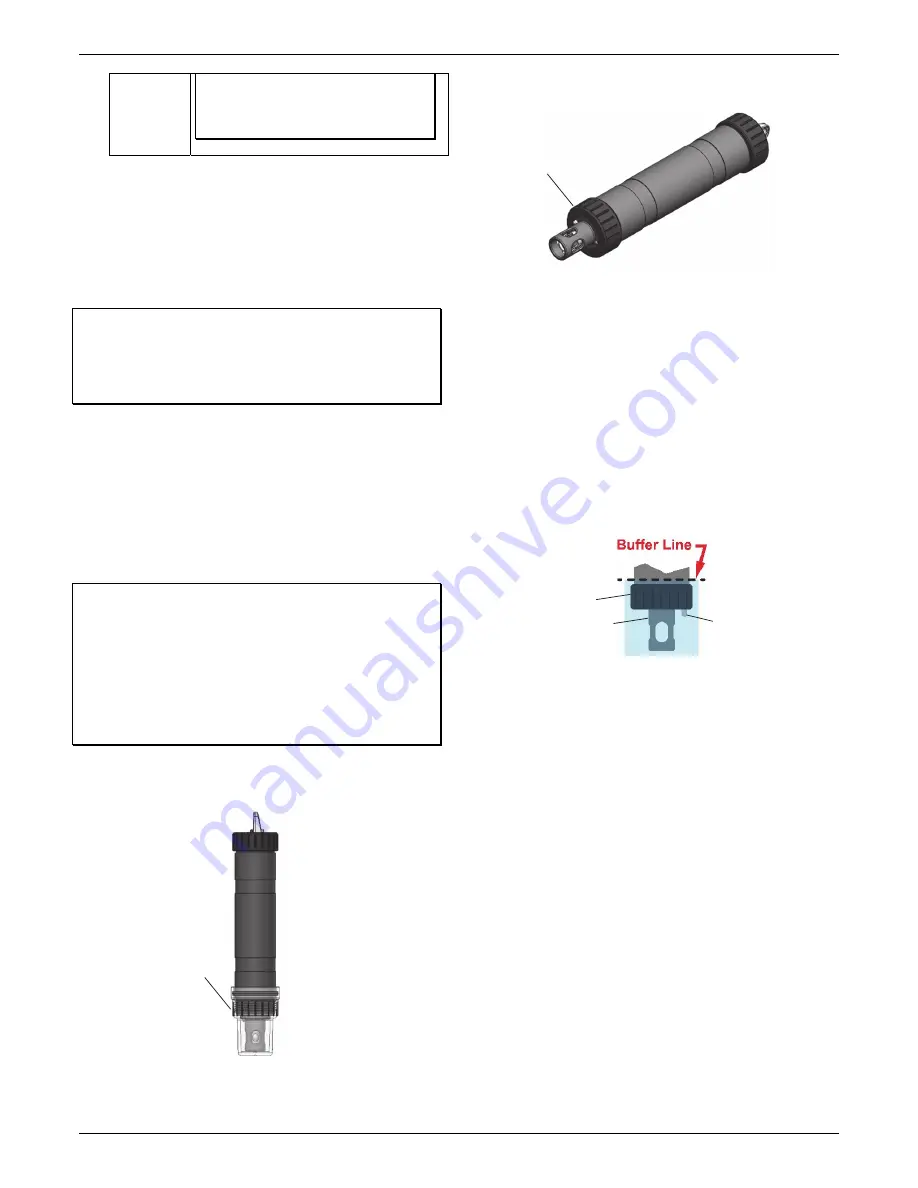
HOBO MX pH and Temperature Logger (MX2501) Manual
U.S. and International Sales: 1-508-759-9500 4
www.onsetcomp.com
sure you have the time to complete the
entire update process, which requires that
the logger remains connected to the device
during the upgrade.
Calibrating the Logger
If the logger is new or if you have installed a new pH electrode,
you must calibrate the logger with the app before configuring
and deploying it. The app prompts you to calibrate the logger if
the pH electrode has never been calibrated, the last calibration
is more than seven days old, or the logger firmware was
updated.
Important:
The pH sensor must be kept in storage solution
when not being calibrated or deployed in water
. The hydration
layer surrounding the sensor starts to break down after 10
minutes if the pH sensor is not submerged in storage solution
or calibration solution, or deployed in water.
You will need:
•
Deionized or distilled water and a squirt bottle to rinse
the pH sensor.
•
The logger with the pH electrode installed and the copper
guard removed.
•
Calibration solution (also called buffer solution) poured
into beakers. All three buffers are available in a kit
(MX2500-CAL-KIT) or individually (MX2500-CAL-4,
MX2500-CAL-7, or MX2500-CAL-10).
Important:
The logger should be calibrated based on the
conditions at the location where it will be deployed.
Specifically, if the water temperature is expected to be
different than 25°C (77°F), it is important for the calibration
buffers to be close to the expected temperature of the analyte
(see the chart at the end of this section for the effect of
temperature on buffers). Similarly, if the logger will be
deployed at an altitude other than sea level, perform the
calibration at or near the deployment altitude.
To calibrate the logger:
1.
If the sensor is in the storage solution, unscrew the clear
storage cap and remove it from the logger.
2.
If you removed the clear storage cap, screw the closure cap
onto the logger.
3.
In the HOBOconnect app, tap Devices.
4.
Remove the logger from water. If the logger was previously
configured with Bluetooth Always Off, press the switch on
the logger to wake it up.
5.
Tap the logger in the app to connect to it.
6.
Tap Calibrate if you are not automatically prompted to
calibrate the logger.
7.
Use a squirt bottle to rinse the pH sensor with deionized or
distilled water.
8.
Place the sensor end of the logger in the pH 7 solution and
tap Start. Make sure the sensor end cap, temperature
sensor, and closure cap are submerged in the solution as
shown in the illustration. Once the pH reading is stable, tap
Confirm.
9.
Rinse the pH sensor with deionized or distilled water.
10.
If you are using the pH 4 buffer, place the sensor end in the
pH 4 solution and tap Start. If you are not using the pH 4
buffer, tap Skip and go to step 12.
11.
Once the pH reading is stable, tap Confirm. Rinse the pH
sensor with deionized or distilled water.
12.
If you are using the 10 buffer, place the sensor end in the
pH 10 solution and then tap Start. Once the pH reading is
stable, tap Confirm. If you are not using the pH 10 buffer,
tap Skip.
13.
Verify that the slope and offset are acceptable and tap
Save. If the slope and offset are not acceptable, tap the
back arrow and repeat the calibration steps in this section
as needed.
14.
Rinse the pH sensor with deionized or distilled water again.
If you are not deploying the logger immediately, place the pH
electrode in storage solution
. Unscrew the sensor end cap
installed on the sensor end of the logger. If the clear storage
cap is empty, pour in storage solution to the marked fill line.
Carefully screw the clear cap with storage solution onto the
logger. Only use storage solution in the clear cap; do not use
water. Do not use the copper guard when the pH electrode is in
storage solution.
Unscrew the clear
cap filled with
storage solution
from the logger
Screw the closure
cap onto the logger
before calibrating
Closure cap
Sensor end cap
Temperature sensor












